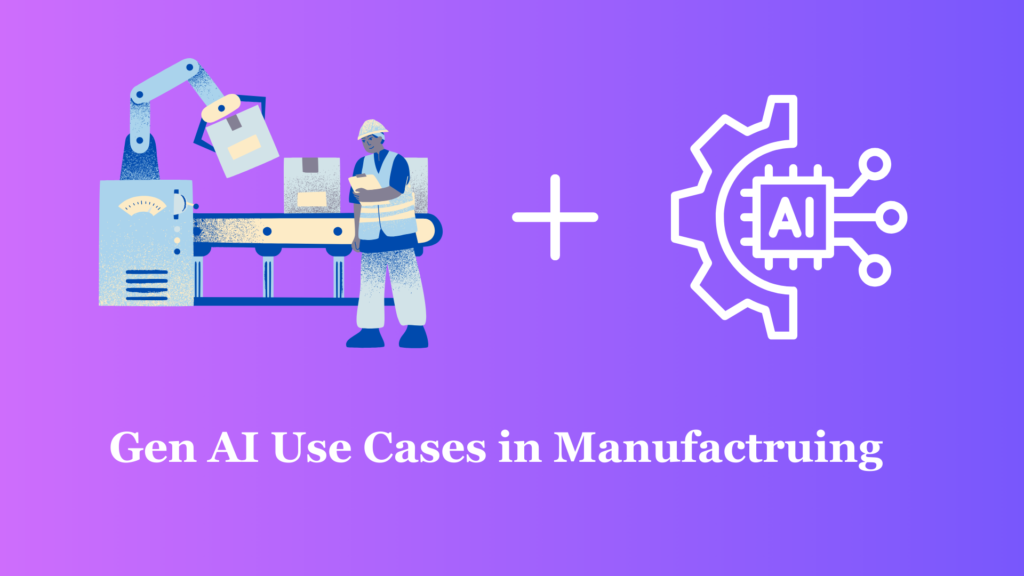
In recent times Artificial Intelligence has gradually occupied center stage in the majority of technological conversations. Especially after the breakthrough at the end of 2022 by OpenAI with Gen AI, any individual can experience the exceptional capabilities of AI using ChatGPT. This massive exposure to Gen AI tools has increased worldwide interest in AI, which is why AI is being implemented in almost every aspect of our lives.
To put it simply, AI is an attempt to simulate or mimic human intelligence by computers. Until a few years ago computers used to do exactly what we told them to perform in the form of writing programs. This computer system did not possess the ability to think independently and perform certain tasks. But with Gen AI this computer system can ‘think’ in a way that we humans think and can make decisions somewhat similar to humans. This is why AI is now such a big deal. In that scenario, the manufacturing industry which is considered to be a cornerstone of the global economy can also take advantage of advancements in AI.
Businesses and industries are no exception to this AI fascination and potential. We can see this in healthcare, medicine, customer services, autonomous vehicles, scientific research, retail, and the creative world AI use cases and applications are being developed.
But before we understand how the manufacturing industry can use AI to improve its functioning, let’s first understand what challenges the current manufacturing industry usually wrestles with regularly.
Major Challenges
- Equipment Maintenance & Downtime: Sudden and unplanned machine failures can stop production causing massive loss and delay.
- Quality & Testing: For any product or service, maintaining high quality is always a challenge, and in manufacturing due to mass production often maintaining a great quality consistently. Moreover, manual inspection and testing can make the quality control process more prone to human errors.
- Supply Chain Management: It’s one of the most complex aspects of manufacturing due to the challenge to ensure timely delivery while maintaining efficiency.
- Production Efficiency: For plant supervisors balancing production timelines, schedules, resource allocations, and workflow efficiency is crucial to maximize production output.
- Workers’ Safety: Ensuring a safe working environment inside a manufacturing facility is paramount for any organization but old-style methods have limitations in creating safe work conditions.
Fortunately, recent developments in AI particularly Generative AI (Gen AI), shows promising solutions to these complex problems. Let us understand how Gen AI can address those challenges, ushering in a new era of high efficiency and productivity in the manufacturing sector.
We will look into 5 ways where Gen AI can help to solve these problems.
- Predictive Maintenance with Gen AI
Gen AI with its Large Learning Models (LLM) capabilities can not only manage plant machines and equipment efficiently but also predict equipment failures before they fail. It’s achieved by analyzing data from sensors and past maintenance data. Gen AI brings immense capabilities in pattern analysis that can forecast when a machine is likely to fail and that will help plant supervisors to schedule maintenance activities accordingly.
This will help plant managers minimize sudden downtime, extending the active lifespan of equipment and also reducing the cost of maintenance.
- Quality Control with Gen AI
Gen AI-powered solutions can analyze data and images from the production environment in real-time and quickly identify defects, and deviations from the quality standards far more effectively than human-supervised manual inspection. These solutions will normally use smart cameras, computer vision, IoT, and many other new technologies to empower Gen AI that ultimately enhance accuracy and consistency across the quality control.
- Supply Chain Management with Gen AI
AI-enabled solutions can help in demand forecasting, customer behavior analytics, optimizing inventory management, and streamlining logistics and transport. Gen AI can be an extremely powerful tool to analyze historical business data and catch up best patterns to help businesses make better decisions.
- Production Management with Gen AI
Gen AI can be used in product design and subsequently development. Based on product requirements AI-enabled solutions can create initial designs that are refined after iterations. Similarly, it can optimize production schedules, timelines, and production processes.
- Safe Working Environment with Gen AI
Plants can use Gen AI-powered smart cameras and computer vision, to monitor working conditions inside the plant and predict potential risk hazards. AI-powered systems can quickly analyze live data from sensors and cameras to detect any unsafe behavior or incident and alert workers and management to take corrective actions.
Summary
It’s becoming evident with each passing day that Gen AI is poised to transform business across the world and the manufacturing sector will be significantly impacted. Gen AI brings the extraordinary ability to vast amounts of data and identify patterns to generate valuable insights that help in making better decisions. Looking at the potential of Gen AI, its integration into manufacturing is likely to happen sooner than later with numerous benefits. However as it happen with any new technology, there could be some risks and challenges associated with adopting Gen AI into the manufacturing industry. Currently, Gen AI applications often exhibit hallucinations and potential biases as they are often not rightly trained or rectified which could bring unwarranted risk to businesses and people.
Despite those challenges, embracing this new technology can unlock the great potential of manufacturing. As we are seeing nowadays, as AI continues to evolve its solutions and applications in manufacturing will only grow from here. That will lead to a smarter, better, and more efficient production environment in the manufacturing sector.
